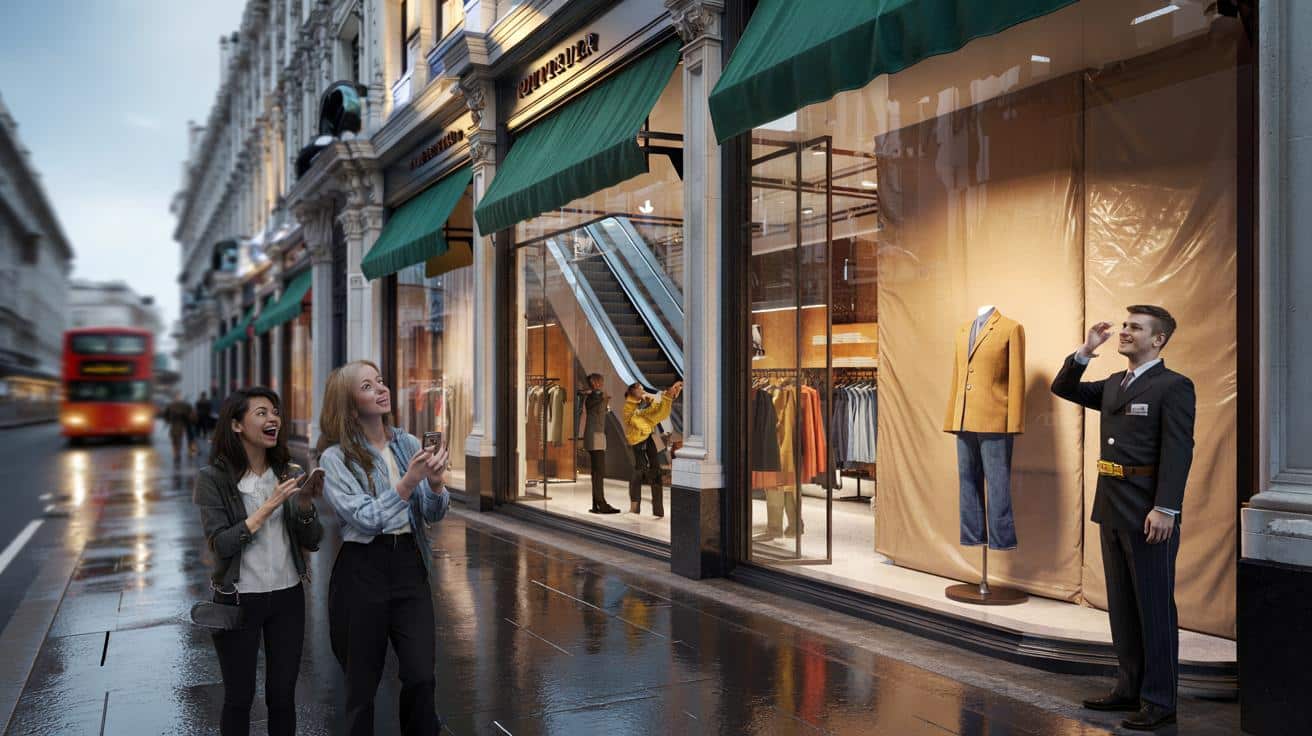A historic name from the high street is stepping back into British life after a quarter of a century away. The return taps into memory, but it also tests a tougher, faster retail world.
Two women stopped to squint, phones out, eyebrows up. One of them mouthed the name as if it were a secret sweet from school days. We’ve all had that moment when a place you loved flickers back into view and you’re not sure if it’s real or a trick of the light.
Inside, staff moved rails. A flash of heritage fonts. An old-new colourway. It felt like finding an old friend on a street you no longer recognise. A security guard smiled when asked if the rumours were true. “You’ll see soon enough,” he said, tapping his watch. Intrigue hung in the air like perfume.
The comeback: what’s different this time
The headline is simple: an historic department store is returning to the UK market roughly 25 years after its last lights went out. The subtext is messier, because the British high street it left behind doesn’t exist anymore. Rents bite, rates sting, and online baskets have eaten the lunch of more than one grand old name. A revival in 2025 lands in a world of TikTok trends and same-day drops, not cardboard dividers and Saturday queues.
Ask shoppers what they remember and you’ll hear the same sensory reel. The swoosh of escalators. The heft of a branded carrier bag. A suede jacket that meant everything at 17. One man I met outside a pop-up held up a vintage label he’d kept tucked in a drawer for years, the angles softened by time. “My mum bought it on a rainy Thursday,” he said, laughing. “I can still smell the canteen chips.” Nostalgia is potent—yet it’s not a plan on its own.
This comeback reads as hybrid. A digital-first re-entry to map demand by postcode, backed by short-term leases, pop-ups, and shop-in-shops to de-risk the floor space. Fresh inventory sits beside carefully curated throwbacks to catch the eye and the algorithm. The supply chain hums in the background, recalibrated for smaller drops and faster reads. It’s not the old department store reborn; it’s a portfolio of touchpoints wearing an old badge with new intent.
How to relaunch a legacy brand without getting stuck in the past
Start with a tight pilot. Limited assortment, limited time, very public learning. Measure everything: dwell time, conversion, returns velocity, social saves by product code. Rotate capsules every six weeks to keep oxygen in the room. When a size curve breaks, backfill in hours, not weeks. When a colour dies, kill it. This is retail as choreography, and the music changes mid-song.
Play the memory, don’t live in it. A heritage logo on a single knit, a photo wall from the archives, a playlist that nods to your golden years—then pivot the rest to today’s fit and fabric. Let’s be honest: nobody does that every day. People want price clarity, fit consistency, and delivery that arrives before the weekend. Build trust with basics that wash well, then let your storytelling do the lift for the special stuff.
Give the comeback a human voice. Say why you left. Say why you’re back. Own the gaps you need to close and the promises you can keep right now.
“Nostalgia opens the door, but relevance keeps people inside,” says a veteran merchandiser. “You win when the past feels like an invitation, not a museum.”
- Anchor categories: two sure-fire pillars (e.g., denim and outerwear) before expanding.
- Service small wins: on-the-spot alterations, easy pick-up/returns, staff who actually know the stock.
- Price architecture: three tiers with honest jumps, no mystery markdowns.
- Sustainability that reads in the hand: fibres, care labels, take-back bins that don’t look like props.
What this says about the British high street
The return of a storied name is more than a brand story. It’s a test of whether the UK still wants department-store thinking—edit, convenience, a sense of theatre—delivered in a decarbonised, scroll-native age. The last 25 years scattered that experience across apps, packages, and pick-up lockers. Bringing it back under a single roof, even a temporary one, asks whether we miss the mix or just the memory.
Shoppers are canny. They’ve trained themselves to compare tabs for price, fit, and speed, and they’ll do it while standing under your sign. If the resurrected name can offer a **quiet comeback** with sharp basics, fair tags, and service that feels like a favour rather than a script, there’s room. If it leans too hard on yesterday’s glow, the crowd will smile, take a selfie, and walk on. The high street is short on patience, long on choice.
There’s a hopeful angle here for cities too. A well-run pop-up spills footfall to cafés, nail bars, and bookshops, knitting back some of the casual bustle we’ve been missing. It might also nudge landlords into **new lease shapes** and councils into **smarter rate relief**, the unglamorous levers that decide whether windows stay lit. The name above the door matters, yes. The deal under the floor matters more.
As the first rails roll out and the first orders ship, you can feel a soft reset in the air. Shoppers try sleeves. Staff learn faces. A brand that once felt finished takes another breath. That’s not just a comeback; it’s a small bet on shared space, shared taste, shared time. People will argue about whether we need department stores at all. That’s healthy. The intrigue is in what this experiment shows the rest of retail—about patience, about pace, and about what still makes us leave the house.
| Key point | Detail | Interest for readers |
|---|---|---|
| Hybrid relaunch | Online-led entry with pop-ups and shop-in-shops | Where and how you’ll actually be able to buy |
| Nostalgia with guardrails | Selective throwbacks paired with modern fits and fabrics | Why it won’t feel like a costume party |
| Service as advantage | Easy returns, alterations, knowledgeable staff | What will make a visit feel worth the trip |
FAQ :
- Which department store is coming back?A heritage European name long absent from UK streets is staging a return via a mix of online and short-term physical spaces. The company is keeping its rollout deliberately quiet and flexible.
- Will there be full-size flagship stores?Not at first. Expect smaller footprints, pop-ups, and collaborations while the brand tests demand, then a decision on larger sites once the numbers make sense.
- Why did it leave the UK in the first place?Rising costs, changing shopper habits, and a strategy pivot away from the UK at the time. The market has moved on, and so has the brand’s model.
- What’s new compared with the old days?Faster product cycles, tighter edits, clearer pricing, and an omnichannel setup that lets you buy, return, and exchange in ways that work around your week.
- How soon can I shop it?The online selection goes live first, with temporary spaces rolling out through the year. Follow the brand’s UK channels for dates and locations—timelines can shift as pilots evolve.









